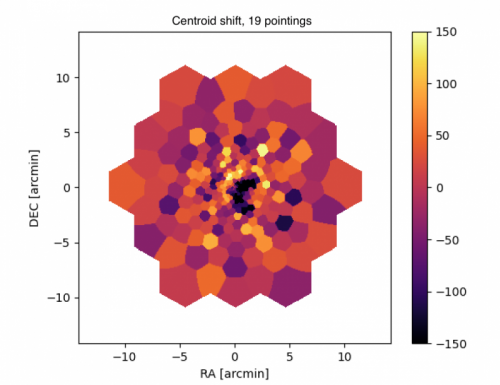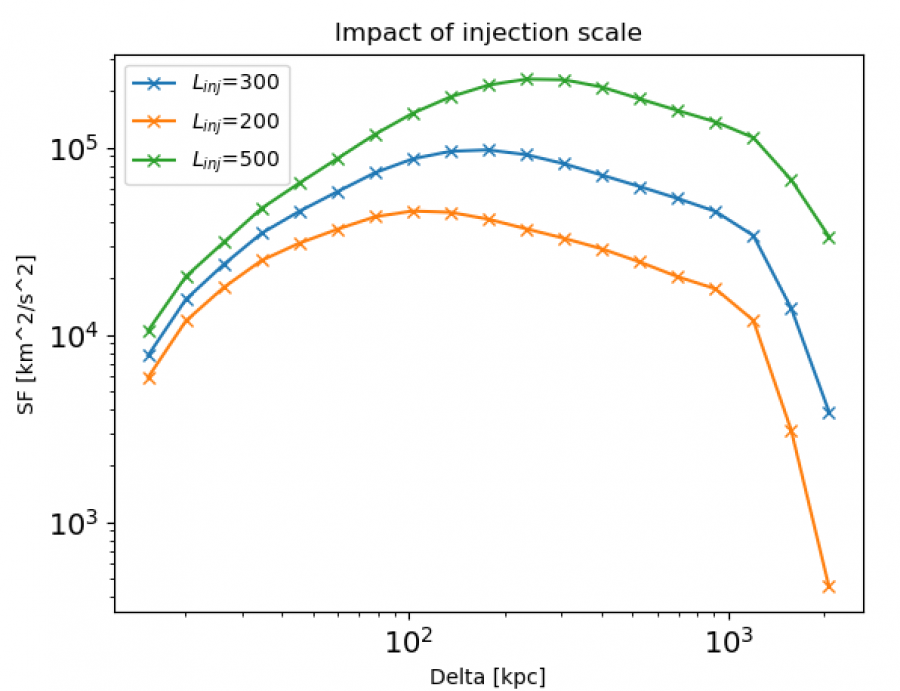
Date.
Clusters of galaxies are the largest bound astrophysical objects in the Universe. Located at the nodes of the cosmic web, they are huge gravitational potential wells of masses about 100 to 1000 trillion times that of the Sun, filled with around 85% of dark matter and 15% of ordinary (baryonic) matter. The latter is for more than 85% constituted by the hot X-ray emitting gas between galaxies. As such, galaxy clusters are major probes with regards to how large-scale structures assembled. They grow and evolve through violent merger events and accretion of material from the filaments of the cosmic web, leading to bulk and turbulent motions in their intra-cluster medium. This is thought to contribute to a non-thermal pressure support against gravity, which if neglected would bias our understanding of the galaxy clusters and of our models of structure evolution.
To characterize those movements, accurate velocity measurements are needed and can be obtained from the shift and broadening of the spectral lines emitted by the hot gas. However, this requires a high spectral and spatial resolution that is not available on current observatories, but will be with Athena. Its X-IFU instrument will provide data with an incredible energy resolution of 2.5 eV up to 7 keV – a factor about 50 times better than instruments operating Charge Coupled Devices (CCDs)!
We are conducting studies to assess the feasibility of this core science objective, and more precisely the capabilities of the X-IFU to recover turbulent and bulk motion parameters (such as the injection and dissipation scales, the slope and normalization of the turbulent cascade). From a toy model of a representative nearby cluster including a uniform turbulence described by a universal Kolmogorov power-spectrum, we perform X-IFU multi-pointing simulations of observations using the SIXTE end-to-end simulator. These are then post-processed and analyzed to recover the centroid shift of the emission lines from the hot gas over the whole cluster. We use them to derive a structure function as proxy of the underlying turbulent spectrum. These mock measurements are checked against various models computed using the formalism from Clerc et al, 2019 (see Fig.1), to recover the input turbulence parameters through Markov chain Monte Carlo (MCMC) fits (work on-going).
We also explore the optimal observing strategy to achieve the reconstruction of these parameters. Accounting for a complete error budget (from statistical errors to sample variance), we estimate the number of pointings, their configuration and required exposure time to recover the turbulence parameters. Fig.2 shows examples of various geometries and their corresponding structure function.
With its incredible spectral and spatial resolutions, the X-IFU will allow for the first time to map precisely turbulent and bulk motions in galaxy clusters, leading to breakthroughs in our understanding of the physics of the intra-cluster medium – amongst many other topics!
By Sophie Beaumont
X-IFU Calibration Team member

Fig.1 : Structure functions computed using theoretical models, following the formalism from Clerc et al, 2019. One can see how the turbulence parameters – here the injection scale (in [kpc]) – impacts the shape of the structure functions. 
Fig. 2 : (Top) Mosaic maps of simulated centroid shift measurements with X-IFU (in [km/s]) for 3 observation strategies (with 19, 9 and 5 pointings, with 125 ks exposure per pointing). (Bottom) Corresponding structure functions computed from the simulated observations.


 Youtube
Youtube